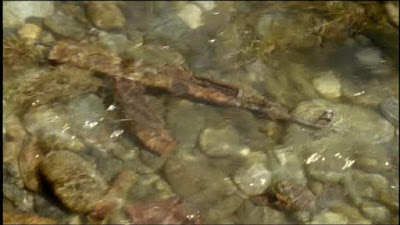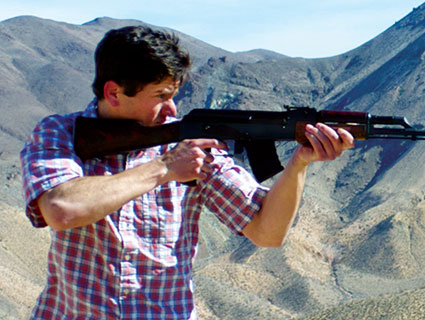

- #Soviet ak 47 serial number location serial numbers
- #Soviet ak 47 serial number location full
- #Soviet ak 47 serial number location series
However, other modifications were grouped as part of a more complex Product Improvement Program (PIP).

Some changes were simply singular modifications to individual parts, enacted to simply ease production costs or take advantage of new manufacturing techniques.

This is one reason the rifle has piqued the interest of so mnay small arms enthusiasts over the years. Since this time, Soviet engineers have continued to work on improving the rifle, and as a result some very notable and interesting design and/or manufacturing improvements were made on the production lines as time went by.
#Soviet ak 47 serial number location full
Afterwards, initial batches were produced which carried over most of the prototypical designs, but revisions were continuously made before it reached full operational production capacity at the Izhevsk Arsenal in 1976.
#Soviet ak 47 serial number location series
After a long series of developemental prototypes were more or less hand-built between 19, the rifle pattern was eventually adopted by the Soviet armed forces as thier primary individual infantry rifle and type-classified as the Avtomat Kalashnikova model of 1974.

The Russian AK-74 infantry rifle has been the subject of a continuous and quite persistent improvement process since it's inception. We have made every effort to wade through the endless confusion of refurbished or rebuilt rifles to provide the reader with a clearer understanding of the evolution of this interesting firearm. Having said this, please be aware that replacement parts, factory refurbishments, off-site rebuilds and field modifications often cloudy the water and confuse the uninformed observer.
#Soviet ak 47 serial number location serial numbers
Please contact us if you have any good images of rifles that show clear serial numbers or features, especially if the materiasls do not seem to conform to the information you might find here within each particular classification. There are likely small errors in the text below, but details are constantly being more narrowly defined so hopefully the overall accuracy has increased somewhat compared to the earliest version. Every change will be peer-reviewed as much as possible to ensure it's accuracy, based on the best evidence available at the time. This is an ongoing project and continues to be upgraded as time allows and as new information emerges. Above all, we do not wish to spread misconceptions or false data points. In any case, if the reader finds any erroneous information herein we want to be notified so we can correct or remove it in a timely manner. We have made a great attempt to refrain from using guesswork, and in those cases where we felt it was important to include information that had yet to be fully vetted (for the sake of continuity or completeness), we have noted the uncertainty of the information. Because of this, I am sure the information contained in thois work will never be totlaly complete or accurate, from the moment it is published, and therefore I wish to apologize for any errors or ommitions you might find in the following text. However, this document will never be complete since it's purpose is to continuously gather information as it is discovered, for the purpose of sharing with others who share our mutual interest and respect for the firearm, the history and the men behind them. Much of the earliest information was gathered through years of multiple conversations in the early 1990's among a great many early Kalashnikov collectors and enthusiasts, to which we owe a huge debt of thanks. At the time the project was started, there were no books to be found on the subject that covered this area of firearms research in such great detail. For the most part, it is solely based on original research and painstaking comparative study. This research paper is an ongoing project and is based on an original draft compiled and developed by Ekie.


 0 kommentar(er)
0 kommentar(er)
